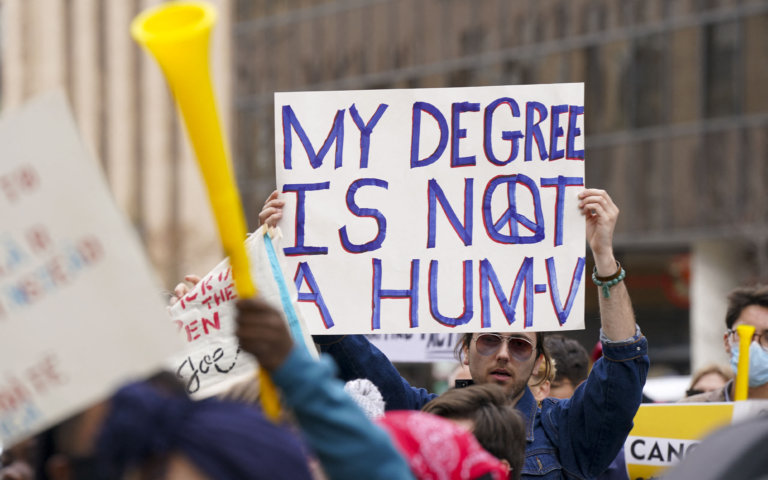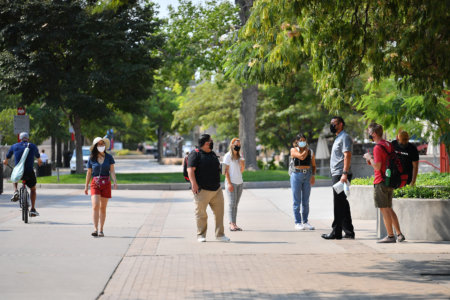
The price of an American degree is among the costliest in the world, and it looks like things are about to worsen. Globally, higher education is feeling the yoke of a pandemic financial downturn, and the current US inflation has driven up prices for goods and services.
At an inflation rate of 8.5%, universities and colleges across the nation have finally capitulated to increasing costs by raising tuition fees after holding the fort throughout the pandemic. University fees in the US are now experiencing sharp hikes that have not been seen since the 2008 global recession, according to Inside Higher Ed.
“By far, my greatest immediate concern is the impact of inflation on faculty and staff, our students, and the university,” Boston University president Robert A. Brown wrote to employees in an email dated May 6, 2022. The email mentioned that undergraduate tuition had to be increased at the university by 4.25% for the upcoming academic year, the largest one so far in 14 years. Even so, the move isn’t enough to mitigate mounting expenses in staffing and operations.
“I also am mindful that our students and their families are affected by our increases and by inflation. We are caught in an inflationary vise between the institutional pressures and the impact on our students and their families,” he added.
University Business reports that other universities have followed suit by raising tuition fees, such as Seattle University (up by 3.75%), Syracuse University (up by 4.5%), Oregon Tech (up by 7%), and Arizona State University (up by 3.5%).

A nationwide enrolment dip in the last two years contributed to rising tuition fees in American colleges and universities. Source: Spencer Platt/Getty Images North America/Getty Images via AFP
National enrolment crisis escalates fee hikes amid US inflation
Despite its popularity as a study abroad destination, trouble has been brewing at home for American tertiary education. Enrolment rates have declined nationwide by 5.1% from the onset of the pandemic to fall 2021, totalling to a loss of 937,500 students as many opted to work in lieu of studying due to the financial repercussions of the COVID-19 pandemic.
Less students mean less money pouring in, and without billion-dollar endowments enjoyed by elite institutions, it’s community colleges that are feeling the brunt of emptier classrooms. Two-year colleges have lost nearly 15% of students in the last couple of years. If the trend persists, it could hamper educational mobility over time, as community colleges are often gateways to higher education for lower-income families and minority groups.
https://twitter.com/Study_INTNL/status/1511991620266520578
To put things into perspective, the US student debt crisis has reached a historic high at 1.7 trillion dollars, with total tuition fees ballooning by 180% from 1980 to 2019-20. Although public tertiary institutions are cheaper than private ones, austerity cuts and shifting state funding due to volatile market conditions result in tuition hikes to make up for the costs.
How US inflation will affect international students
For overseas students, the price of chasing the American dream could be too great to bear in the coming years. Aside from paying significantly higher out-of-state fees, international students can anticipate forking out more expenses to cover living costs for the duration of their studies.
According to a 2018 report by HSBC, foreign students spend an average of US$99,417 over the course of their studies in the US. The number will likely go up as global higher education grapples with inflationary demands.
“Honestly, I think inflation is just compounding the challenges we’re facing,” Phil Weiler, vice president of marketing and communications at Washington State University (WSU), told Inside Higher Ed. WSU has managed to control and cap tuition fee increases for in-state students due to a 2017 state law, but not for students in other categories.

The current inflation has added nearly US$300 in monthly expenses for an average American household. Source: Spencer Platt/Getty Images North America/Getty Images via AFP
“We have nonresident undergraduates, we have resident graduate students, nonresident graduate students and, of course, we have international students. The university has flexibility [to increase fees] on all those other categories of students,” Weiler remarked.
US inflation is also adding US$296 to the monthly budget of an average American household. Higher education experts predict that increasing costs will be felt sharply by some more than others. Indian students, who make up the second-largest cohort of international students in the US, would be hit harder by price hikes.
“Unlike in China, students from India are price-sensitive and highly likely to be affected by price fluctuations, such as changes in tuition fees, interest rate fluctuations and inflationary pressures,” Janet Ilieva, founder of Education Insight, was quoted saying in Times Higher Education.










